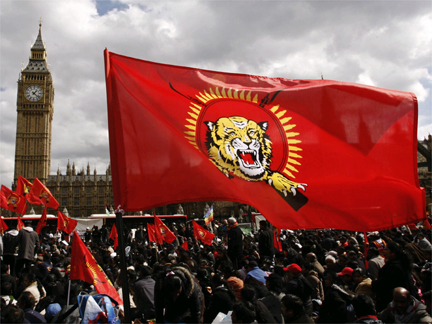Sri Lanka - interview
Army to rescue trapped civilians but NGO says people still at risk
Article published on the 2009-04-10 Latest update 2009-04-12 11:17 TU
The Sri Lankan military says it launched an operation on Friday to free thousands of civilians trapped by fighting between the army and the Liberation Tigers of Tamil Eelam (LTTE).
On Thursday, Human Rights Watch accused the government of putting civilians at risk, in their ongoing offensive against the rebel group.
"Sri Lanka's so-called ‘no-fire zone' is now one of the most dangerous places in the world," said Brad Adams, Asia director at Human Rights Watch.
While on Wednesday, a pro-rebel website claimed that shelling had killed 129 and injured 282 civilians. An allegation denied by the army.
“Presently troops are in the outskirts and they are observing the movements of civilians,” says Bridadier Udaya Nanayakkara. “LTTE is keeping all civilians in that area as hostages, even yesterday over 300 people escaped from the LTTE clutches and came towards the army troops, seeking protection from the military […] there are many more lined up to come.”
Interview: Brigadier Udaya Nanayakkara
HRW has called on the UN Security Council to take steps to prevent further human rights violations. They estimate that around 100,000 are trapped in an area of 20 kilometres, controlled by the LTTE.
Meanwhile, UN chief Ban Ki-moon spoke with Sri Lankan President Mahinda Rajapaksa on Thursday. He asked that all trapped civilians be allowed to leave the area.
But the army denies firing on civilians and instead claims that LTTE rebels are keeping them hostage. Nanayakkara said it was difficult to determine how long this rescue operation would take.
“We are not giving any timeline for this operation, and there is no operation taking place right now, because the LTTE have taken these innocent civilians as hostages […] we are concerned about our people who are stranded in this area,” he told RFI. “Over 66,000 people have come to take protection from the military.”
Elsewhere in the world, Tamil demonstrations continue to call for a ceasefire. In Canada on Thursday supporters for the LTTE spent a third day on the streets protesting and in Britain demonstrators also spent three days protesting in Parliament Square earlier this week.









